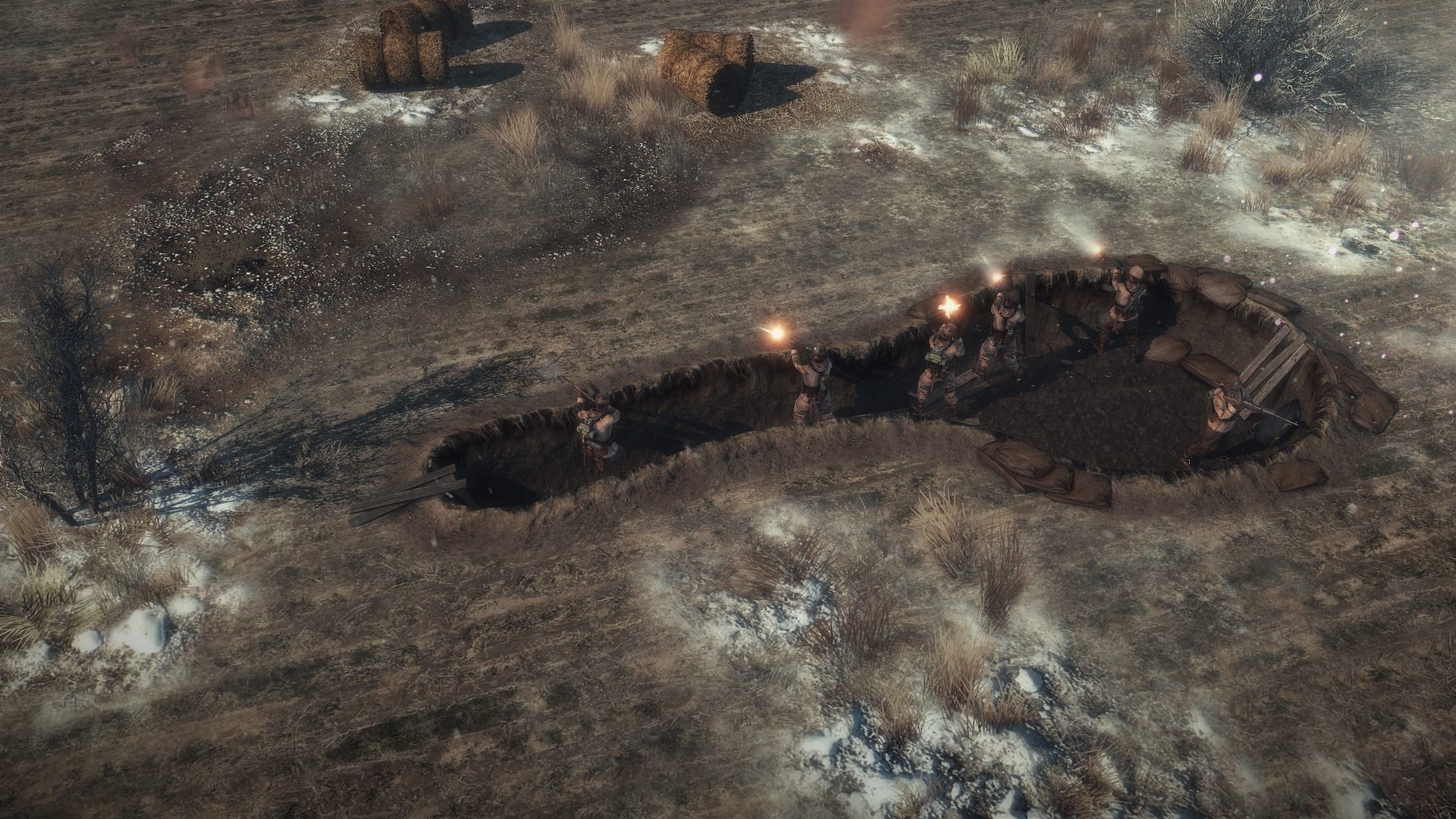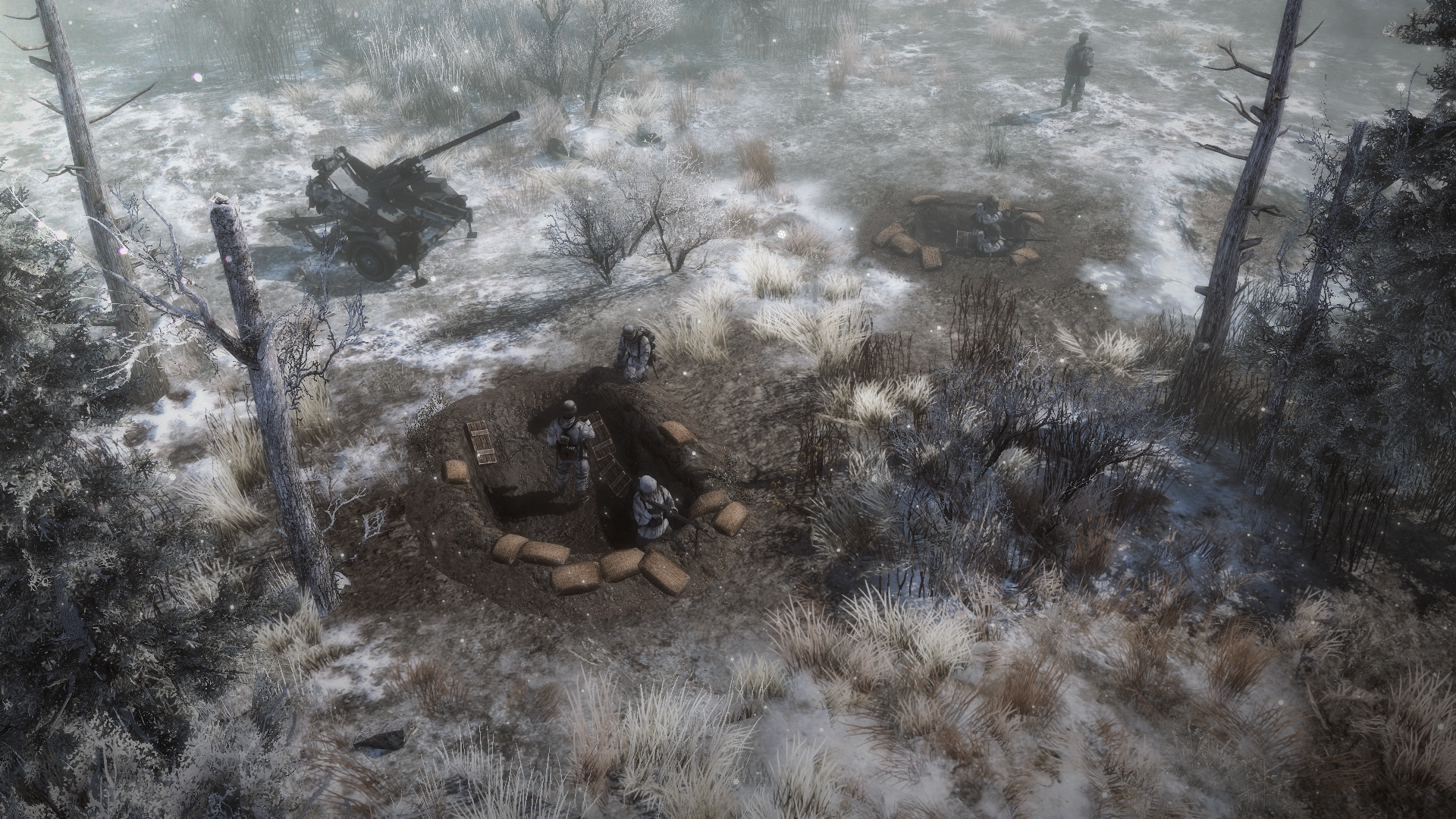
Nov 18, 2016
Call to Arms - Gates of Hell: Ostfront - Cule

Hello friends and players! Welcome back. Today we have some juicy news. The polling results are in, and you voted to learn more about the ballistics and ammunitions system overhaul, as well as our realistic armour penetration redesign. There is too much information in each one of these topics to cover them all in just one developer blog so we will begin Part 1 by discussing gun ammunition.

Introduction
To understand better how we plan to move forward, it is important to recognize where we are coming from. In previous gem2 games, gun ammunition was largely limited to 2 or 3 shell types: Armor Piercing, High Explosive, and some included higher penetration shells (APCR).
Our goal has been to redesign this system to portray most historically accurate representation of gun ammunition that has ever been in Gem2. This will be achieved through but not limited to the following features.
- Vehicles will come with realistic loadouts for their time period, both in composition and overall quantity.
- Each shell type will have its own muzzle velocity and other properties, meaning that a gun has a different behaviour for each shell type depending on historical data.
- Newly added slope effects, Thickness / Diameter Ratios, and Normalization functions for EACH shell type and caliber size. (This will be explained later in further detail)
Shells Types
Vehicles will rarely have more than 3-4 types of shells in their inventory, so they will all be useful and have their role. Although there are many types of ammunition that were designed throughout WW2, in GoH we have a structure of different classes that is colour-coded for ease of use, even to someone who has never heard of a tank shell before. Each one is different and they are all labelled to ensure you will not have problems in recognising and using the projectiles in game. Here are all the classes of shells!
Armour Piercing (AP)

Standard armor piercing rounds without ballistic or armor piercing caps. AP shells are the most primitive way of making a projectile penetrate a hard surface. A chunk of metal is thrown at the armour to make a hole! The faster it goes, the more energy it strikes with, the more it penetrates - so it loses effectiveness over distance. At the beginning of WW2 most nations used an AP shell but as armor technology progressed, newer more advanced shell types were developed and issued.
Armor Piercing Capped (APC)

Standard armor piercing round with an armor piercing cap (AP + APC, abbreviated APC instead of APAPC). Armor piercing shells had a tendency to shatter when impacting armor that is thicker than the diameter of the shell. The addition of a cap (a soft material on the tip of the shell) helps reduce the shattering effect and allows the projectile to overcome armor in situations it would otherwise shatter and fail to penetrate.
The soft cap also helps to increase shells effectiveness against sloped armor. When a capped shells hit a armor plate at an angle, the cap deforms in the collision, allowing the projectile's center of mass to rotate into the armor's surface. This reduces the angle of attack and improves penetration.
Lastly, APC shells have increased penetration effectiveness against Face Hardened Armor (FHA) but reduced effectiveness against Rolled Homogeneous Armor (RHA). Homogeneous armor has the same thickness throughout, while face-hardened has a thin extremely hard layer. It's not a guarantee that different armor types (RHA & FHA) will be modeled in game, but it is something we may look into adding in the future.
Armor Piercing Capped Ballistic Capped (APCBC)

These shells have all the same benefits and drawbacks of the standard APC shell with one exception, the addition of a ballistic cap. The ballistic cap (also known as a windscreen or windshield) helped reduce air resistance on the projectile. This helped increase the velocity and penetration of the shell at medium and long ranges.
Armor Piercing Ballistic Capped (APBC)

The APBC shell is an untraditional flat nosed armor piercing projectile that is primarily used by the Soviets and was patterned after naval ammunition. What makes this type unique is the flat nose of the core which gives it better penetration against sloped armor than any other AP shell. The flat nose inside it helps dig into angled armor allowing the center of mass to rotate into the armor plate (just like the APC shell but with even better performance). Over time, the ballistic cap was added to counter poor aerodynamics of the flat nose, giving the shell better penetration at longer ranges.
Armor Piercing shells with High Explosive Filler (AP-HE, APC-HE, ABCBC-HE, APBC-HE)



Most of the previously mentioned shell types could come in two different forms: Solid shot or HE (High explosive filler). Solid shot is a just as it sounds, a standard projectile that is solid throughout. HE Filler adds increased damage to internal tank components after penetration. Shells with HE filler have slightly reduced penetration compared to their solid shot counterpart, but if they penetrate, they will cause more damage!
High Velocity shells (APCR, HVAP, APDS)


Depending on the country of origin, they vary slightly in name and method of operation. These shells were designed to increase penetration potential through extreme velocity and hardness. All three shell types achieve increased penetration, but their weaknesses are poor performance against angled armor and they lose effectiveness dramatically over distance because they are light and rely on maximum kinetic energy for penetration.
Armor Piercing Composite Rigid shells (APCR) had a Tungsten core and was used by both the Germans and Soviets. Tungsten is a hard, high density material that is brittle but it is able to hit armor at high velocity and avoid shatter failure. High Velocity Armor Piercing shells (HVAP) is used by the Americans and is similar to APCR.
The British used Armor Piercing Discarding Sabot shells (APDS). It too had a hard core and when fired, the projectile sides fell off as the round as it exited the gun barrel releasing the sabot. APDS maintains its velocity and penetration much longer than other Tungsten rounds due to its smaller in-flight diameter and reduced wind resistance, but it is the least accurate of the three.
High Explosive Anti-Tank (HEAT)

“High Explosive Anti Tank” rounds are designed for guns that cannot shoot projectiles very fast, like short barreled cannons, artillery, and bazookas/rockets. A solution needed to be found to bypass the poor muzzle velocity. There is a shaped charge inside these rounds that concentrates the blast in a very small zone upon impact, launching towards the inside of the armoured target an explosion that generates a beam of molten metal or plasma. These shells are very deadly and do not lose penetration over distance, because the explosive is equally effective at any impact speed.
Side skirts and additional armour plates on tanks are a useful measure to stop these rounds, because the outer metal detonates the shell and the plasma beam does not reach the main armour protection. These shells are rare, so better to use them in the finest hour.
High Explosive (HE)

HE rounds explode on impact and are great against soft targets like infantry and thin armour. They are also useful to destroy concrete and brick walls. Very big HE rounds are also capable of shredding tanks from the powerful blastwave.
How to choose your shell
A tank will usually have a basic AP (with fillers or caps or a combination of everything :3 ) round, an “improved round” depending on the cannon type (HEAT for low velocity guns or ‘high velocity’ shells for high muzzle velocity guns), and finally a HE shell.So if you’re shooting at infantry, emplacements, buildings or weak vehicles, always use HE. No brainer.
If you have a tank that you can beat, use your standard AP rounds. If your AP shell is capped (it will be correctly labelled) it will be great to use against sloped armour.
If you want to destroy a tank at long range or simply you do not have enough penetration because your gun is not made to shoot speedy projectiles, you can use HEAT. If you have APCR or other high velocity shells, these are great for penetrating armour that is too thick for your normal AP. These high velocity shells are also very comfortable to use because they are so fast you will not even have to apply lead to your target, but remember that all the ‘improved rounds’ are pathetic when it comes to sloped armour :P
See you next week with armour redesign!
























